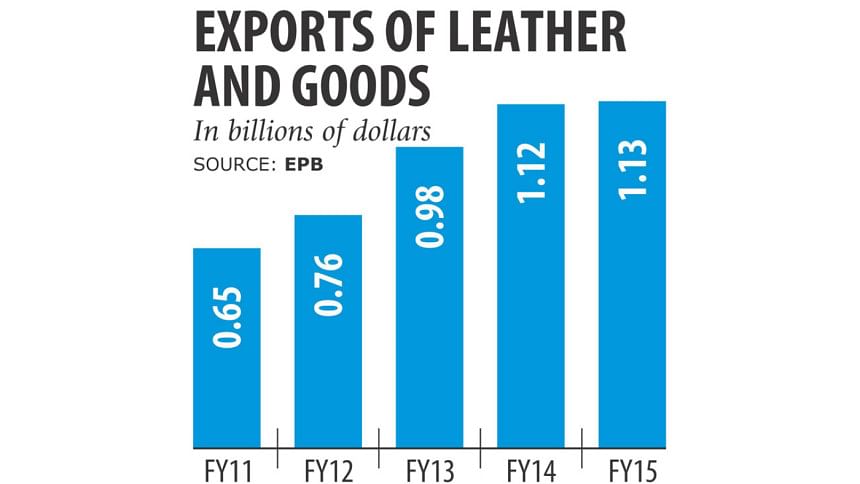Tanners face 72-hour deadline for relocation

The government has once again sounded out a stern warning against tanneries in Hazaribagh, saying the polluting factories will be shut down if they fail to relocate to the designated industrial park in Savar within 72 hours.
Industries Minister Amir Hossain Amu issued the instruction at a meeting with the heads of different projects under the ministry at his office in Dhaka yesterday.
The minister instructed state-run Bangladesh Small and Cottage Industries Corporation to serve a legal notice on the tanneries immediately, the industries ministry said in a statement.
If the tanneries fail to shift their factories within 72 hours of the legal notice, the plots allotted to the factories in the leather industrial park in Savar will even be cancelled, according to Amu.
The latest warning from the government comes as tanneries are delaying relocation from the city to Savar. Legal steps will be taken against the tanners who are procrastinating, Amu said.
Tanneries that have accepted compensation from the government, but have stalled the construction of the plants in Savar, will face seizure of goods from their factories in Hazaribagh, he added.
The issue of relocating the tanneries has been dragging on for years: the government took up a project in 2003, considering the health and environmental hazards. The factories release thousands of litres of untreated and toxic liquid waste into the Buriganga river every day, posing a serious risk to human and animal health and diminishing the prospects of leather exports.
Industry insiders said the factories could not be relocated in the last decade due to wrangling between the government and the tannery owners over who would bear the project costs and a long legal battle between the two sides over awarding a contract for the central effluent treatment plant.
The government initially took up the project to set up the industrial estate with a Tk 175.75 crore fund. However, the cost went up 98 percent to Tk 1,079 crore over the decade.
The amount includes Tk 250 crore in government compensation to the tanners. Of the rest, 20 percent was given as loans to the tanners at a 5 percent interest rate for a long-term, said Abdul Quayum, project director of the industrial estate.
More than 50 percent of the work to set up the CETP has already been completed, making two of the four units of the CETP ready to process pollutants. The CETP now can process pollutants from 50 factories but only 20 factories will be ready in the next one month, according to Quayum.
The industries ministry allocated plots on the 200-acre leather estate to 155 tannery owners through BSCIC, a wing of the industries ministry that is implementing the project.
The tanners will have to invest around Tk 6,000 crore to relocate the factories, set up new plants and begin commercial production, said Shaheen Ahmed, chairman of Bangladesh Tanners Association, urging the government to provide long-term loans at a single digit rate of interest to expedite relocation .
Consequently, the central bank came up with an incentive package for tanners to help them move the hazardous factories as part of its efforts to promote green banking.
The tanneries that have already moved from the toxic tannery hub or are in the process will get an opportunity to reschedule their irregular loans and will have eight years for repayment, with a one-year grace period, according to Bangladesh Bank. Tanners will be charged 10 percent interest on the loans or the banks' cost of fund or whichever is lower.
The central bank has also allowed banks to consider relaxation of the existing down-payment while rescheduling old loans or awarding new loans for tanneries involved in exports.
Tanners will be able to free their collateralised property if they can show equal collateral.
Of the 155 tanneries, 152 have submitted their layout plans; all of them have been approved. Some 145 tanneries have started working on setting up their factories, said the industries minister at a separate meeting in Dhaka yesterday.
Quayum said more than half of the tanneries are close to finishing their construction and starting production.
Speaking to The Daily Star, Ahmed of the tanners' association said most tanneries have been working since January 2015 to set up their units at the estate. “We are not sitting idle. It takes time to set up a factory. It cannot be done overnight.”
Fifty percent of the tanneries would be ready to start commercial operation by May and the rest by the end of 2016, he added.
Ahmed said the CETP is not ready yet although 26 months have passed against 18 months as fixed earlier. The pipeline to bring pollutants from factories to the CETP is not ready yet, he alleged.
The US and European nations, key customers of Bangladeshi leather and leather goods, want to source products from factories that have a clean production process and safe working environment.
The export of leather and leather goods crossed $1 billion for the second year in fiscal 2014-15, according to data from the Export Promotion Bureau.
In 2014-15, Bangladesh exported leather and leather goods worth $1.13 billion, against $1.12 billion in the previous fiscal year, making it the second highest contributor to national exports after apparel.
Bangladesh has some 3,800 micro, small and medium enterprises and 110 large firms in the sector, employing about 70 lakh people. About 95 percent of leather and leather products made in Bangladesh are sold abroad.
Of total exports from the leather industry, 60 percent go to European markets, 30 percent to Japan and 10 percent to the rest of the world, according to industry insiders.
Bangladesh can earn at least $5 billion in exports from leather, leather goods and footwear annually by 2018 if it can properly address environment and compliance issues and give policy support for higher value added products, according to industry insiders.
The leather sector is quite similar to the garment sector, but the scope of value addition is far greater, they added.
Value addition in the sector is close to 90 percent as opposed to 40 percent in the apparel sector, according to Sobur Ahmed, who teaches at the Institute of Leather Engineering and Technology.

 For all latest news, follow The Daily Star's Google News channel.
For all latest news, follow The Daily Star's Google News channel. 



Comments